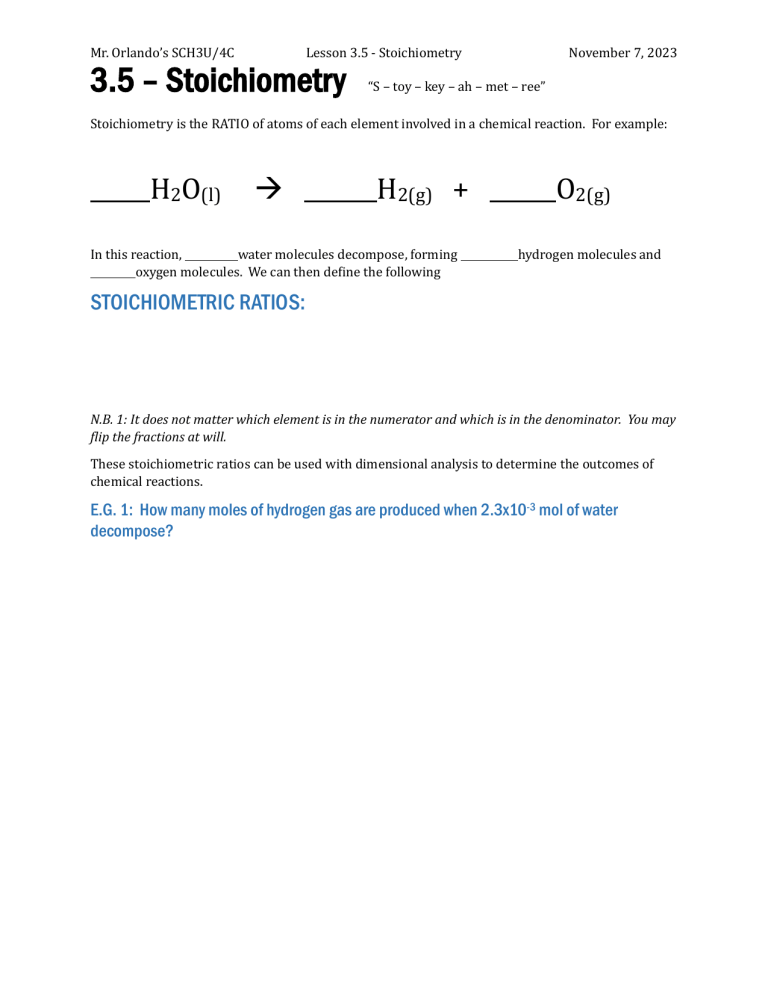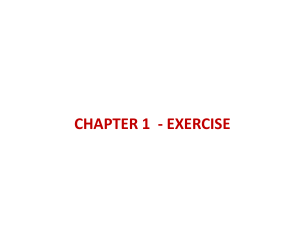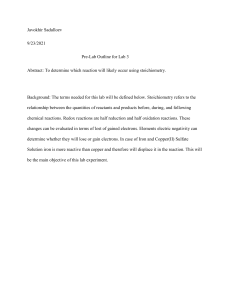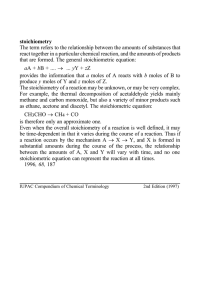
Mr. Orlando’s SCH3U/4C Lesson 3.5 - Stoichiometry 3.5 – Stoichiometry November 7, 2023 “S – toy – key – ah – met – ree” Stoichiometry is the RATIO of atoms of each element involved in a chemical reaction. For example: H2O(l) H2(g) + In this reaction, water molecules decompose, forming oxygen molecules. We can then define the following O2(g) hydrogen molecules and STOICHIOMETRIC RATIOS: N.B. 1: It does not matter which element is in the numerator and which is in the denominator. You may flip the fractions at will. These stoichiometric ratios can be used with dimensional analysis to determine the outcomes of chemical reactions. E.G. 1: How many moles of hydrogen gas are produced when 2.3x10-3 mol of water decompose? Mr. Orlando’s SCH3U/4C Lesson 3.5 - Stoichiometry November 7, 2023 E.G. 2: How many moles of oxygen gas are produced if 3.4x103 grams of lithium oxide are decomposed? E.G. 3: If 3.2 g of solid copper were to react with excess oxygen, how many grams of metal oxide would be produced? Mr. Orlando’s SCH3U/4C Lesson 3.5 - Stoichiometry November 7, 2023 E.g 4: If 3.7g of ethane (C2H6) combust completely, what mass of CO2 and H20 are produced? E.g. 5: What is the mass of solid product when 4.5x10-3g of magnesium react with excess chlorine gas. Mr. Orlando’s SCH3U/4C Lesson 3.5 - Stoichiometry November 7, 2023 E.g. 6: When 1.5g of lithium reacts with excess copper (2) sulfate, what mass of solid copper is produced? E.g. 7: When 4.4g of calcium nitrate reacts with excess lithium sulfate, what is the mass of the precipitate produced?





